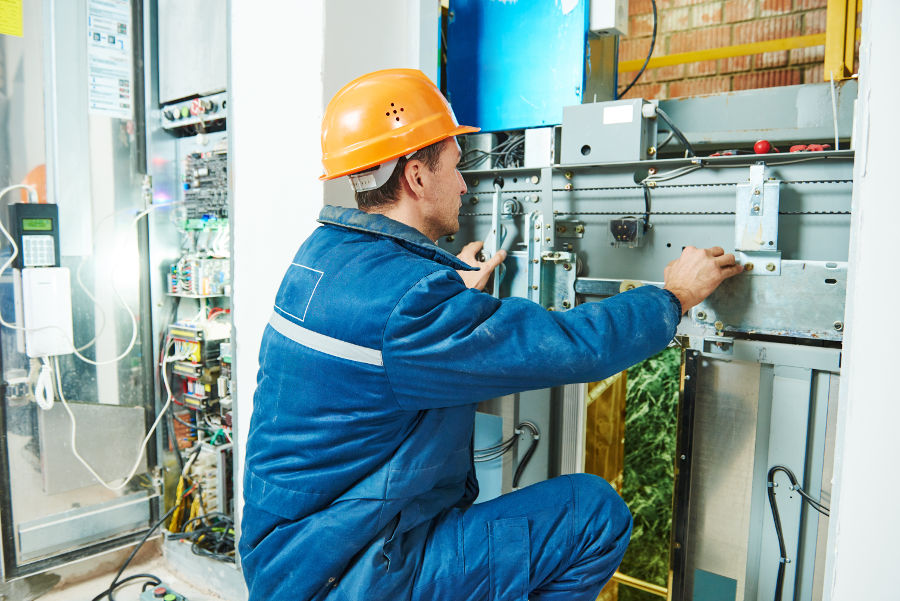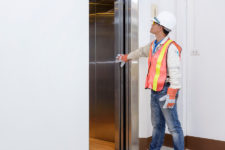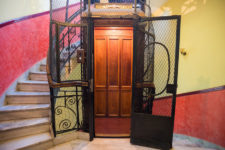Welcome back to SiteCompli’s Ask the Expert series! This month we talked to Joe and Jo Ann Caracappa at Sierra Consulting Group, an elevator consulting firm specializing in inspection witnessing, modernization, and elevator evaluations. 
Elevators are a crucial component of New York City’s culture—with over 70,000 vertical transportation devices in the five boroughs and 30 million riders per day, they are undeniably entwined in our daily lives. Everyone has an elevator story: Ryan Seacrest got stuck in one, Carrie Bradshaw found love in one, and my co-worker Linda met Oprah in one. Even just a quick glance at the New York City skyline towering over the river makes it obvious that there are elevators in every single one of those buildings—making elevators a hotspot on the radar of all property managers and city regulators.
A case in point: since 2009, the Department of Buildings have increased regulations on elevators drastically. Category 1, 3, and 5 inspections became required, and in just the last two years alone, fines have doubled, meaning that one missed inspection could cost property managers up to $5,000.
Here at SiteCompli, we’re all about breaking down complex regulations and processes into actionable steps for your compliance team. So, without further ado, here are our experts’ takes on the current trends in the elevator industry.
Current State of the Industry
Right now, most property managers are fairly aware of the 2009 regulations, requiring yearly Category 1 inspections, and Category 3/Category 5 inspections if and when they’re required. Because of the advances in information technology, a lot more data is available to property owners, so most of them know when they need to complete and file their inspection reports, and so on.
Most of the violations and fines we’re seeing nowadays are concerned with late or missing filings of Affirmations of Corrections (AoCs), as opposed to performance failures during Category 1 inspections. For example, if John Doe files his AoC late, and now his deadline for the Category 5 inspection is coming up, his Cat-5 filing will be rejected until he pays his fine for the late AoC filing—which he may not have known he had.
Trending and Upcoming Issues
Door Lock Restrictors
Back in 2009, the DOB mandated that all elevator doors be mounted with door restrictors as part of the K3 Code Upgrades. Recently, after an allotted adoption period, inspectors have begun to enforce this regulation to ensure that restrictors are present and operational on every elevator car. Joe says, “We here at Sierra have seen inspectors issue cease-uses to elevators for missing or non-operational restrictors, as well as a fine of $1,000. Additionally, the city won’t allow the elevator to be put back into use until one of their inspectors personally comes back and checks that the restrictor has been properly implemented. This process could take a few days, which might cause friction with tenants and other elevator users.”
Elevator Door Lock Monitoring
Elevator Door Lock Monitoring is another upcoming subject of regulation by the DOB. The city wants all elevators to be able to monitor the operations of their doors, to be enforced by January 2020.
For newer elevators (less than 10 years old or so), owners should be able to go into the elevator computer and activate the door monitoring program. If the computer does not yet have the program, the owner can contact their elevator company, who should be able to write and install software for that elevator monitoring program.
If the elevator is over 10 years old, it’s very possible that it doesn’t even have the ability to accept new software, in which case the owner would have to install an additional device onto the elevator to provide monitoring. This cost could run up to $15,000.
Although we currently have no information on penalties for violations of this code, we can predict a significant fine. In fact, Joe states, “I wouldn’t even be surprised if a cease-use was issued until the system is installed, which could be an issue because between permits for installation and ordering the equipment, the process could take up to a few months.”
Biggest Customer Pitfalls:
“I’ve seen a lot of customers run into issues while switching their elevator service providers,” Joe says. In his experience, the two most common mistakes are:
- Failing to check the history of your building with respect to previous Category 1, 3, and 5 inspections to make sure everything is up to date before switching providers.
Example: Bob decided that he wasn’t happy with his current service provider and wanted to switch companies. He was using ABC Elevator Company, but made the switch to XYZ Company—however, he forgot to check whether he had any outstanding filings, and it turned out that he had an AoC that wasn’t completed and filed on time. It’ll be very difficult for him to now go back to company ABC and ask them to make corrections now that he has cancelled his contract with them, and XYZ Company will not file an AoC for a violation that didn’t occur within their contract. Bob, in a nutshell, is in a very difficult situation.
- Changing contracts without ensuring that the equipment on site is compatible with the contract language.
Because the terminology of maintenance contracts are written with the elevator company in mind, they can be very difficult to read for property managers without specific expertise in elevators. For example, Susan recently switched to XYZ Company, and during her annual Category 1 inspection, her inspector found deficiencies with the elevator in her building. However, what she didn’t know was that her contract with XYZ Company did not cover corrections, so she had to spend more time, effort, and money on negotiating a proposal for XYZ Company to fix her elevator and file the AoC.
How to Avoid These Pitfalls:
According to the experts at Sierra Consulting, the best way for customers to avoid these pitfalls are to consistently monitor their buildings and inspections, and make sure they have no open ECB, PVT, or Category 1/5 violations on a regular basis. Hiring a third-party elevator consultant to witness inspections is required by law—but communicating regularly with your elevator consultant to make sure you stay on top of your inspections and corrections can prove to be a valuable relationship, and one that we’d highly recommend.
Special thanks again to Joe and Jo Ann Caracappa at Sierra NY Consulting for their expertise.




